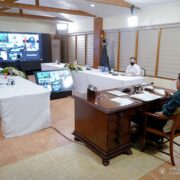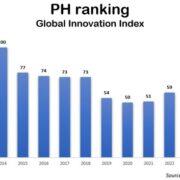
The country will return to a positive growth rate this year if the government effectively carries out its risk management strategy against the coronavirus disease (COVID-19) and use its resources well, the head of the National Economic and Development Authority (NEDA) said Wednesday.
“Ang gusto kong ibalita ‘yung ating projection sa GDP growth rate ay babalik sa positive this year, 6.5 percent. Ituloy lang po natin ‘yong risk management, ‘yong paggamit ng pondo nang maayos para tulungan ‘yong na-affect ng pandemic, at ‘yong ating vaccination program ay mabilis natin ipairal,” Socioeconomic Planning Secretary Karl Kendrick Chua said in his report to President Rodrigo Roa Duterte.
Also in his report, Chua said imposing stricter restriction carries certain costs and benefits. For instance, imposing a two-week modified enhanced community quarantine (MECQ) can prevent up to 266,000 new COVID-19 cases, 4,738 new deaths, and 11,626 new severe or critical cases that will overwhelm the country’s healthcare system.
But it also entails costs, according to Chua. Hunger in the NCR is at 3.2 million, and the imposition of MECQ will result in 58,000 additional incidence of hunger.
An unemployment figure of 128,000 will be added to the existing 506,000 individuals who are already without jobs, he said. MECQ will also result in an income loss of P2.1 billion per day in Metro Manila and Bulacan, Rizal, Cavite, and Laguna.
Among NEDA’s recommendations, which were adopted by the IATF include the adoption of localized targeted lockdowns on communities with high-COVID-19 cases instead of shutting down the entire economy.
NEDA also recommended the continued opening of the country’s public transport system to help the workers and at the same time promote and support active transportations such as bicycle use.
Curfew hours were imposed but excluded workers who are vital to the economy. Essential travel is allowed outside Mega Manila bubble — NCR, Rizal, Laguna, Cavite, Bulacan.
Other measures adopted by the IATF include the reduction to 30 to 50 percent in office attendance based on the memorandum from the Office of the President.
Factories and supermarkets, and other important facilities were allowed to operate at regular capacity. Dine-in in restaurants was prohibited but outdoor dining, takeaway, and food deliveries were permitted to help one million workers in the restaurant industry.
NEDA has kept its growth target of 6.5 percent to 7.5 percent this year but sees the economy maintaining such growth next year taking into account the short and medium-term impacts of the coronavirus disease pandemic.
The 2022 GDP target set under the updated Philippine Development Plan (PDP) is lower than the 8 to 10-percent growth forecast announced by the Development Budget Coordination Committee (DBCC) last year.
The country’s economic managers expressed optimism about exceeding next year’s growth target under the updated plan.
—
Stay updated with news and information from the Presidential Communications Operations Office by visiting their website at pcoo.gov.ph.






